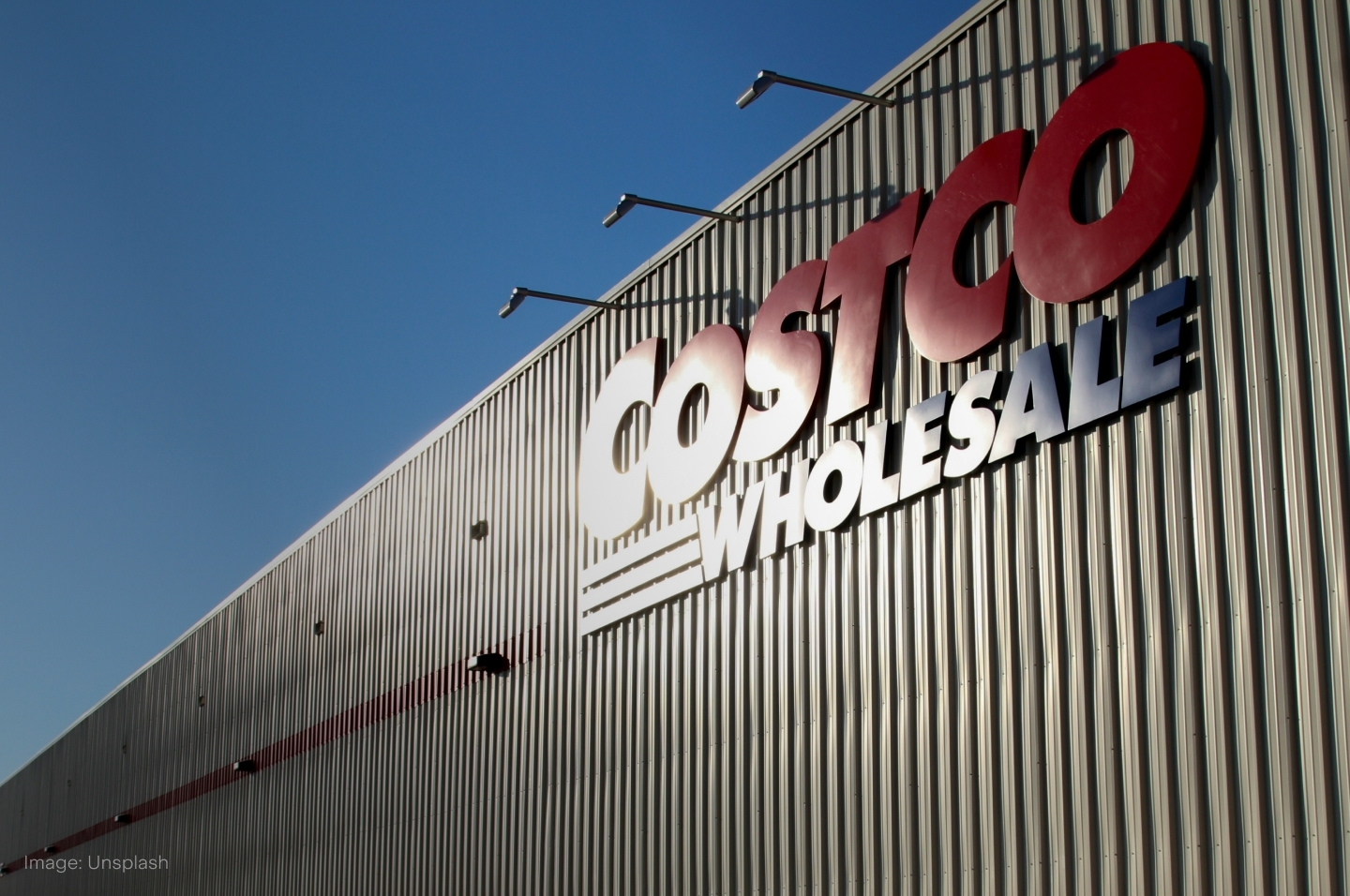
Under the Spotlight Wall St: Costco Wholesale Corporation (COST)
For more than 40 years, Costco has been one of the leading players in wholesale retail, known for its quality goods with affordable prices. Can it continue to grow? Let’s put it Under the Spotlight.

The invention of supermarkets radically changed the way people shopped in the 20th century. Instead of customers relying on small grocery stores where shopkeepers tended to pick goods off shelves for them, supermarkets allowed consumers to have access to many more items via wide aisles, where they could walk around with their shopping trolleys and largely grab what they wanted for themselves. The supermarket concept took off and the bigger stores that required fewer staff to assist customers benefitted from economies of scale and cost reductions.
Once the model had been successfully implemented, it seemed logical to take it to its extreme: even bigger stores, with fewer hands-on staff, selling goods in bulk, which allowed for even larger discounts. However, trimming what were already paper-thin profit margins even more, hoping the discount would be big enough to lure sufficient customers in and enable the business to turn a profit, was a risky approach.
Retail legend Sol Price noted the business opportunity of wholesale retail, but was also aware of its potential pitfalls. So Price decided to try to make the model work with a twist: he created a discount store, FedMart, which was exclusive to U.S. government workers and charged a US$2.00 annual membership fee. While the company could break even on most items, Price hoped memberships would result in a healthy profit. The business model proved successful; so much so that after he was forced out of FedMart, Price founded another membership-based wholesale chain in California in 1976 called Price Club, which was not limited to government staff and was also open to small business owners.

Birth of a giant
While Price Club continued to thrive, opening several new locations, Price’s protégée and former FedMart VP Jim Sinegal, along with retailer Jeffrey Brotman, took note of Price Club’s success and founded Costco ($COST) in 1983. Costco followed a similar model, selling goods in bulk and adopting a membership fee structure. However, it differentiated itself by being open to an even broader public and by focusing on a much smaller variety of products, including brand-name merchandise alongside its private label offerings. The tighter inventories allowed for cost reduction, thus leading to lower prices.
In addition, Costco introduced strict pricing policies: products could not be priced more than 14% above their cost, while private label items (now united under the Kirkland Signature brand) were not allowed to be marked up more than 15% above their cost. The business model proved very successful, and the company expanded. By 1993, to get a firmer grip on the wholesale retail industry, Costco and Price Club merged. Initially operating under the PriceCostco label, all stores were united under the Costco brand name in 1997.

Expansion
The following years were marked by a significant expansion. Previously operating only in the U.S. and Canada, multiple Costco stores were opened across Europe and Asia, while the company would later expand to Australia and New Zealand too. In an effort to become a one-stop shop for its customers’ needs, Costco also began operating petrol stations at some of its locations.
Today, Costco is the world’s third biggest retail company, with 874 different stores in 13 different countries. The firm offers a wide array of products, from groceries to glasses, petrol to liquor, and credit cards to vehicle insurance. And that’s not forgetting its food court. In fact, the hot dog and soda combo has retained its US$1.50 price since 1985, despite inflation woes over the decades.
Much like other products offered in the food court, the hot dog combo is a relatively inexpensive way to lure customers in, make them walk through multiple aisles (as the food court is usually located at the back of a store) and engage in ‘treasure hunts’ – sometimes quite literally, with the company selling 25-ounce gold bars – as they discover cheap products they weren’t necessarily looking for.
Record numbers
The number of Costco members has not dropped in a single year in the past decade, reaching 127.9 million people in 2023. Membership fees, which start at US$60 in the U.S., are one of the key reasons for the company’s profitability, accounting for nearly 70% of operational income.
.png&w=3840&q=100)
While membership fees might be relatively inexpensive for U.S. citizens, customers in other countries have not been scared off by the price. Costco stores in China are booming, with openings creating havoc as shoppers scramble in huge lines to grab discounted goods. But in spite of the firm’s international success, the lion’s share of the company’s revenue continues to come from its home country. Out of the US$242b in sales recorded in 2023, 72% came from the U.S.
The cost
Even though Costco has robust revenue and membership numbers, profit margins are slim due to the sheer nature of the industry the firm operates in. Net income margins are 2.73%, just above the 2.39% of Walmart ($WMT), its biggest competitor. Costco’s high revenue growth rate, with the company reaching an impressive 11% CAGR in the past five years, has allowed it to sustain a continuous increase in profits.
Trading at a 44x price-to-earnings ratio for the next fiscal year, Costco shareholders have so far been willing to pay a significant premium over its competitors. Walmart’s forward P/E ratio sits at a more moderate 25x level – though still above the industry median of 18x.
One of the biggest risks faced by the company in recent times has been the rise of e-commerce, with the king of warehouse retail struggling to gain a relevant foothold online. However, in recent quarters, online sales have improved significantly, rising 21% month-on-month in January 2024.
For FY2024, analysts expect revenue to rise in the mid-single digits and earnings to increase in the low teens, despite no expectation for price hikes on membership fees. If the company continues to grow at such a rate and is able to raise its subscription prices, then unlike the goods it sells, Costco shares are not likely to be found for a discount. But much like Costco customers, investors might want to buy in bulk.
This does not constitute financial advice nor a recommendation to invest in the securities listed. The information presented is intended to be of a factual nature only. Past performance is not a reliable indicator of future performance. As always, do your own research and consider seeking financial, legal and taxation advice before investing.

Rodrigo is a seasoned finance professional with a Finance MBA from Fundação Getúlio Vargas, one of Brazil's premier business schools. With seven years of experience in equities and derivatives, Rodrigo has a profound understanding of market dynamics and microstructure. Having worked for Brazil’s biggest retail algorithmic trading platform SmarttBot, his expertise focuses on risk management and the analysis, development and evaluation of trading systems for both U.S. and Brazilian stock exchanges.

